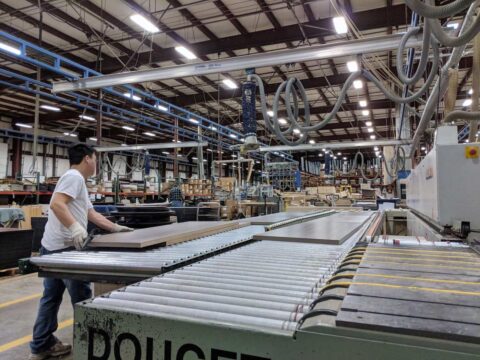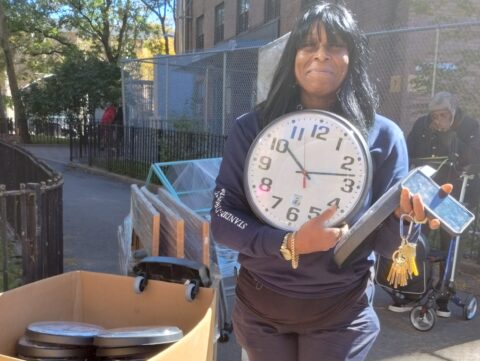An introduction to a circular workplace champion

Hello, Circular Workplace! As the head of sustainability and the newest member of the Green Standards team, it’s great to connect with this diverse, global community working to raise awareness of the zero-waste office.
A scientist by training, I began my career with a focus on repairing the environmental and social wrongs of our past. When I moved into the business world, I quickly realized the immense value of proactive measures — doing what’s right by the environment and our communities not only prevents significant downstream costs but also fosters sustainable growth. I spent nearly a decade working to improve circular practices in products and production within Steelcase, one of the world’s top furniture manufacturers.
Last month I joined Green Standards, the global sustainable decommissioning company that’s been putting circular economics into practice for 15 years. I’ve dedicated my career to proving that people and planet can benefit from business success, and I’m always looking for new ways to make this happen. If that’s of interest to you too, let’s connect!

Three ways to avoid carbon tunnel vision
We can’t get to net zero without the circular economy. The logic of this oft-repeated statement is simple and best communicated by the Ellen MacArthur Foundation: While 55% of global carbon emissions come from burning fossil fuels, the rest are associated with products, materials, and food. And embracing circularity is the best way to decarbonize all that stuff.
But there’s a but. Circular solutions and carbon reduction are broadly linked, but the metrics of success don’t always align. It’s important to avoid carbon tunnel vision when measuring progress towards circularity. Carbon dioxide emissions and their equivalents are a powerful tool for measuring the impacts of products. But a single-minded focus on carbon reduction can have unintended consequences.
It all comes down to scope. If you’ve ever run a life cycle assessment, you know how variable the results can be. The quality of data, type of model, and biases of the person running it can lead to wild swings in outputs. Are we measuring cradle-to-grave or cradle-to-gate? Are we assuming a universal, high-functioning recycling system? And do we consider the impacts of raw material extraction?
Take durability, for example: A flimsy, lightweight product generally has a better embodied carbon story than a sturdier, more durable product – but it’s also more likely to become waste in a few years. A durable product may have two or three uses, reducing the long-term embodied carbon. If we don’t consider end-of-life solutions, we can easily miss this reality.
The solution to this problem is systems thinking: Taking a wide-angle view while always keeping sight of what matters most. Here are three tools that can help:
- Material Flow Analysis: Track the flow of materials through a system to identify inefficiencies, risks of resource depletion, and opportunities for recycling and reuse.
- Supply Chain Risk Assessment: Evaluate the risks associated with the supply chain, including the reliability of sourcing recycled materials and the impact of disruptions on circular processes.
- Environmental Impact Assessment: Assess the broader environmental risks and impacts of circular economy initiatives with a focus on long-term sustainability and ecological health.
These assessments help identify potential bottlenecks, sustainability challenges, and resilience measures necessary for a successful transition to a circular economy.
And remember, the circular economy is an entire economy, so it’s no surprise that no one number can sum it up. Careful consideration of the roles we each play in the wider system – and working together through coalitions like Circular Workplace – are how we can get to both net zero and circularity.
Highlights from across our coalition
- On July 18th in Atlanta, Kyle Ritchie of JLL will explore how circularity can cut through the ambiguity of sustainability in the built environment as part of the US GBC’s Georgia Building Transformation Forum.
- When the furniture industry gathered in Chicago for NeoCon earlier this month, all the major players were talking sustainability. Our wrap of who’s doing what calls out better supply chains and a 100-year-old task chair that’s still up to the task.
- Are your AIs bigger than your stomach? Here’s Alessandra Pistoia of Microsoft at last month’s Circular Workplace panel in Chicago explaining how the company is using artificial intelligence to reduce food waste.
We’re always looking for case studies, actionable tips, and news items about the circular workplace. Reach out at hello@circularworkplace.com to join our coalition.
Signup for the Roundup
Subscribe to our newsletter and we’ll send you circular workplace updates every month





